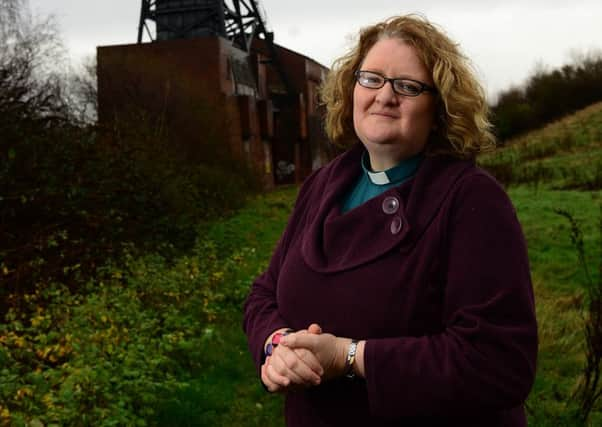We will not forget the hundreds killed in pit tragedy


An explosion at the Oaks Colliery on December 12, 1866, left about 388 miners and rescuers dead. Even in a town which has known more than its share of industrial tragedies, the Oaks explosion was notable.
It was England’s biggest colliery disaster, yet even today there is no precise death total.
Advertisement
Hide AdAdvertisement
Hide AdBut that may change. Saturday marked the one-year countdown to the 150th anniversary of the disaster near Stairfoot and volunteers are working to create a clearer picture of what happened and who the victims were.
To mark the occasion Stephen Miller, from the Dearne Valley Landscape Partnership (DVLP), a Heritage Lottery-funded project with Barnsley Council, gave a free talk at Christ Church, Ardsley, about the disaster and how it was remembered.
Christ Church has always been associated with the Oaks Disaster. The only memorial to remember all those killed sits in the church yard. The better known memorial opposite Kendray Hospital remembers the brave efforts of the rescuers led by Parkin Jeffcock.
Vicar of Ardsley Parish, the Rev Fiona Kouble, said: “This is an important opportunity for people to remember not just the mining heritage of this community but also the impact it had on everyday lives. In remembering this one particular tragedy we can also commemorate all those who sacrificed their lives in the pursuit of the local coal mining industry and the impact that it had on their families.”
Advertisement
Hide AdAdvertisement
Hide AdThe DVLP is working with a team of local volunteers to research in detail those killed in the disaster. This research will then feed into an exhibition at Experience Barnsley and new interpretation at the Barnsley Main colliery site. A full list of all those killed has never been compiled and there are even questions about the total number of casualties.
Coun Roy Miller, who represents Darton East on Barnsley Council, said: “After 150 years it’s about time we made the best possible effort to name all those killed in the Oaks Disaster. The amazing work the volunteers have been undertaking with the DVLP is revealing surprising and tragic stories.”
The research has shown that the men and boys killed in the Oaks Disaster came from across Britain and Ireland.
Many moved to Barnsley from communities in Wales, Derbyshire, South Lancashire and the North East.
Advertisement
Hide AdAdvertisement
Hide AdThe disaster happened on Wednesday, December 12, 1866, when 340 men and boys were working the day shift. With less than an hour of the shift to go, a huge explosion ripped through the workings. The force of the blast blew the cage up the shaft. The following day a second blast killed a number of rescuers.
In total it is believed 361 miners and 27 rescuers died along with pit ponies and their boy handlers.
It was not until 1913 that a memorial was erected to Parkin Jeffcock and the others who died. Mr Jeffcock was a mining engineer who died trying to rescue people from the disaster. An investigation could not say what had caused the explosion.
But some survivors mentioned a violent blast just before the main explosion.
Advertisement
Hide AdAdvertisement
Hide AdThis may have been caused by the driving of a drift near the main seam.
The disaster happened after a series of explosions caused by flammable gases ripped through the workings.
It remains the worst colliery or mining disaster in England, and the second worst mining accident in the United Kingdom, after the Welsh Senghenydd Colliery in 1913 where 439 miners and a rescuer died.
The Oaks mined a seam notorious for firedamp, a name given to a number of flammable gasses. There were numerous fatal explosions over the years.
In March 1847, 73 men and boys died. There were 19 explosions recorded at Oaks before it finally closed in the 1960s.